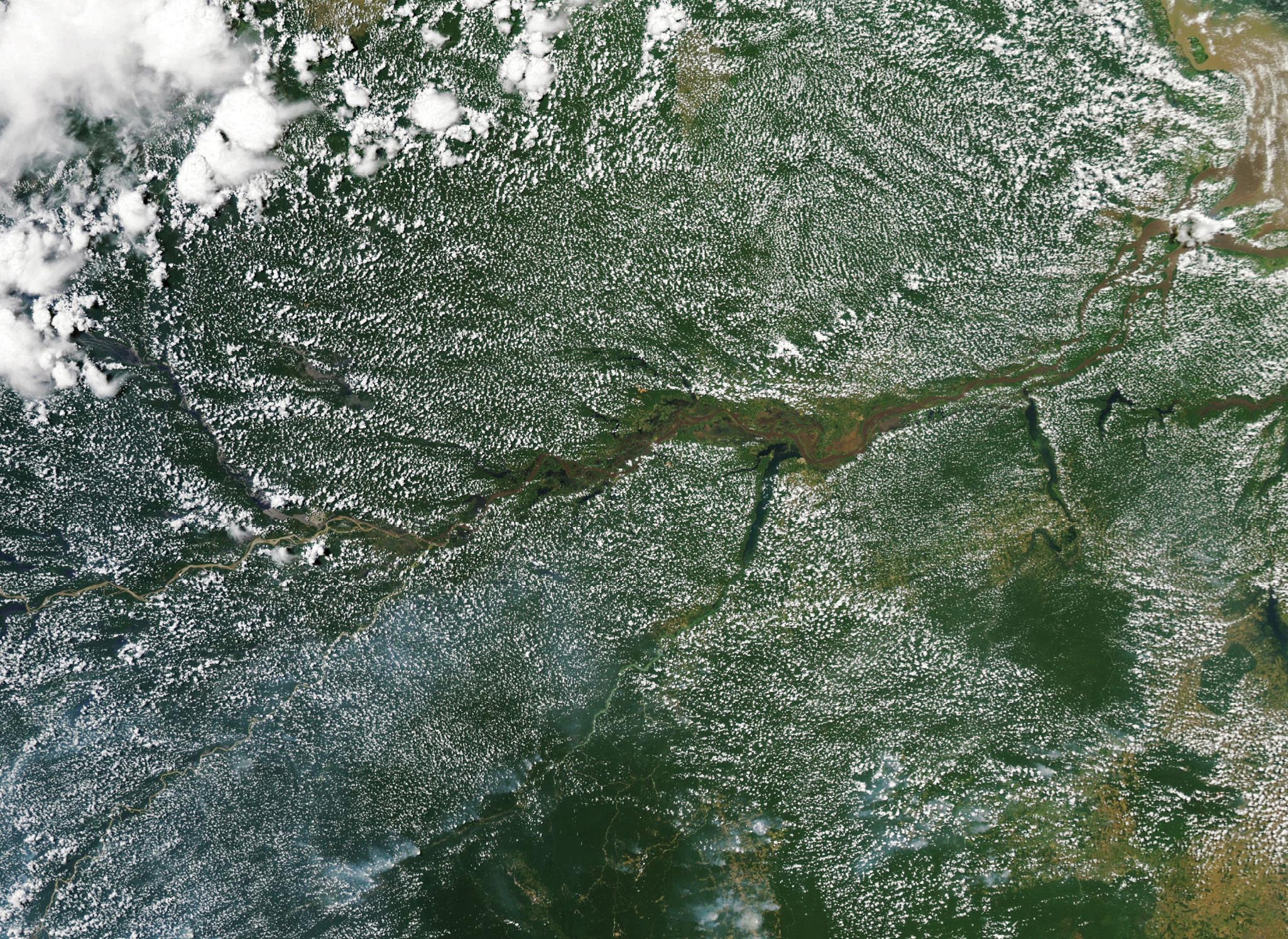Old forests are irreplaceably cool
DOI: 10.1063/pt.uscm.aedr
A single wildfire or logging operation can destroy a centuries-old forest in a relative instant. Although recovering or newly planted forestland can counteract some of the deleterious climate effects of forest disappearance, established forests don’t just spring up overnight. Now Yuxiang Zhang and Xuhui Wang (of Peking University in China) and their colleagues have quantified the implications of those contrasting time scales on the local surface temperatures of tropical forestland. The results imply a scenario that some climate models fail to capture: A fledgling young forest cannot provide sufficient local cooling to fully compensate for the temperature jump that follows the rapid disappearance of mature trees.

Small clouds pop up over Amazon forestland in this 2019 image from NASA’s Aqua satellite. (Image by Lauren Dauphin/NASA Earth Observatory.)

For their analysis, the researchers examined two decades’ worth of land surface temperature data acquired by NASA’s Aqua and Terra satellites. They overlaid those measurements on tree-cover maps, which they used to find tropical forestland and to identify areas where forests either emerged or disappeared.
When compared with nearby areas where forest coverage remained consistent, a region with forest loss had a surface temperature roughly 0.5 °C higher, the researchers report. Land with forest gain, however, was only about 0.1 °C cooler than a consistently forested region. Those results don’t match up with those of multiple widely used climate-encompassing Earth system models, which tend to project deforestation and reforestation to have roughly equal and opposite effects on local temperatures. To investigate the potential mechanisms underlying their temperature findings, the researchers analyzed several satellite-measurable vegetation properties, including leaf area and canopy height, and found similar asymmetries between newly emerged and newly cleared forestland.
Because they made temperature comparisons among neighboring areas, the researchers may have missed larger-scale climate effects of forest gains and losses, such as changes in atmospheric circulation. Nonetheless, the results suggest that, at least from a local climate perspective, replacing a destroyed forest can negate only so much damage. (Y. Zhang et al., Nat. Geosci. 17, 426, 2024
More about the Authors
Andrew Grant. agrant@aip.org
